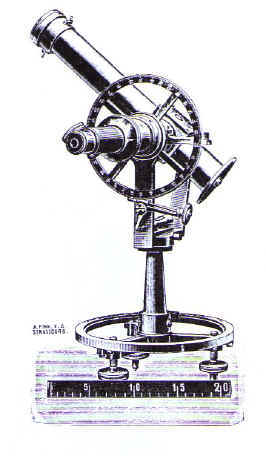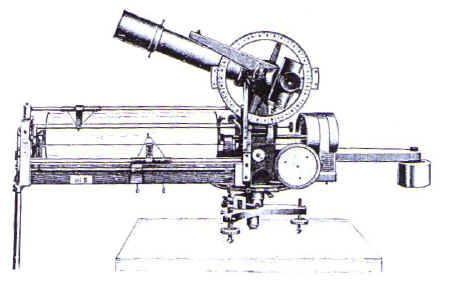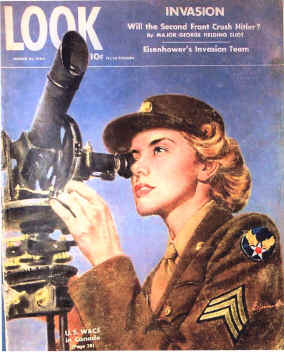Pilot Balloon History
With the invention of the manned balloon in 1783 an urgent requirement for upper-level wind direction and speed developed. The term pilot balloon appears to have been introduced by navigators of manned balloon when they adopted the practice of releasing small paper balloon before an ascent in order to determine the probable direction of flight. On December 1, 1783, just before the ascent of the very first manned hydrogen balloon from Tuileries in Paris, a pilot balloon six feet in diameter was sent up.
The first attempts at a rough determination of wind flow above ground level is believed to have been made in 1809 by Thomas Forster who observed the drift of small free (unteathered) balloons filled with "inflammable gas" and by Wallis who observed more than thirty balloons with a telescope, and found them to have very complicated paths, indicating multiple air currents.
Cleveland Abbe mentions in his "Treatise on Meteorological Apparatus and Methods of 1888 the he suggested to the Signal Corps in 1872 a practical method of determining the position of a balloon is space at a given moment:
The balloon should carry a suspended light thread from 50 to 500 feet long, at the bottom of which hangs suspended a light object. The observer can at any time ascertain the linear distance and altitude of the balloon by observing the altitude of the upper and lower end of the vertical line thus carried by the balloon...
This is a rough explanation of the tail method that is still applicable today.
It was not until December 1873 or 1874, however, that the first instrumental measurements of the track of a large free balloon for the determination of the wind was made by Paul Schreiber. In 1885 Schreiber again made such a measurement, using two surveying theodolites on a 5km baseline, and reported the results in detail. In the following years similar measurements were made by other workers. In 1893 Kremser tried to determine the height of balloons by telescope measurement of their apparent diameter. Up until this time small paper balloons were used. Rubber balloons were used in 1903 and found to have the advantage of practically constant rates of ascent.
In 1903 H. Hergesell showed how the rate of ascent was related to the free lift and the weight of the balloon. With a predictable ascent rate available, wind measurements using pilot balloons began to me made systematically.

The first theodolite really suitable for pilot balloon observation was designed by A. de
Quervain and produced in 1905. This instrument incorporated the "Bent
Axis" or "right-angled" telescope that enabled the axis of the eyepiece to
remain horizontal regardless of the elevation of the objective of the telescope.
This principal has been retained in even the most recent designs, which have merely added
refinements.

In 1910 J. S. Dines modified to the de. Quervain theodolite design to incorporate a self-recording feature. The recording attachment was arranged so that changes in elevation or azimuth were recorded by two separate pens moving horizontally on a clockwork driven drum. Modern theodolites are available as manual and recording types. Recording theodolites utilize electronic encoders to yeild digital data streams with azimuth and elevation information, this information is processed by computer. Specialized theodolites have been produced that incorporate servo motors and CCD image sensors for remote operation, but these units were and are custom built in extremely small numbers.
The introduction of radio and radar for tracking of airborne objects naturally put a damper on the development of pilot balloon methods, the use of which is limited by the presence of cloud and fog and in the case of single theodolite sighting, the limitations on accuracy because of the uncertainty of the actual ascent rate of the balloon. Tests using radio tracked balloons started in 1923 under the direction of the U. S. Signal Corps. In 1937 a U.S. radiosonde network was started by the Weather Bureau. Early systems did not have the capability of determining elevation only azimuth to the balloon. Altitude was still being estimated using ascent rates or deduced from pressure and temperature signals early radio-sonds attached to the balloons. World War II provided a special impetus in development of the rewinsonde/radiosinde technology and fostered the growth of upper-air observing networks. In the 1980's, technological advances in telemetery and small computers made near-fully automated rawinsonde observations feasible. Currently the automated radio tracked balloon system is being upgraded to a system that will utilize global positioning satellite receivers to improve the accuracy and reliability of wind speed and direction data. See the NOAA web site for more information.
 |
Cover of Look Magazine March 21, 1944 showing an illustration of a David White 6061 Pibal Theodolite. |
Along with the widespread use of radio-sonds and radio theodolites Pilot balloons were still in common use through the 1960's even in 1st world weather and military services. Advances in electronics reducing the cost, size and labor, while increasing the capabilities of radio-sonds and radio-theodolites have reduced pibal balloon use to specialized applications in the 1990's and beyond. These applications include Artillery Aiming, Fire Weather, Manned Hot Air Ballooning, Meteorological Training and weather observations in many developing regions of the world.
Acknowledgements:
A significant amount of this material was derived from "Meteorological Office. 577,
The Handbook of Meteorological Instruments Part II, Instruments for Upper Air
Observations, London: Her Majesty's Stationary Office 1961", and "Invention of
the Meteorological Instruments, W.E. Knowles Middleton, the Johns Hopkins Press Baltimore,
1969 "
